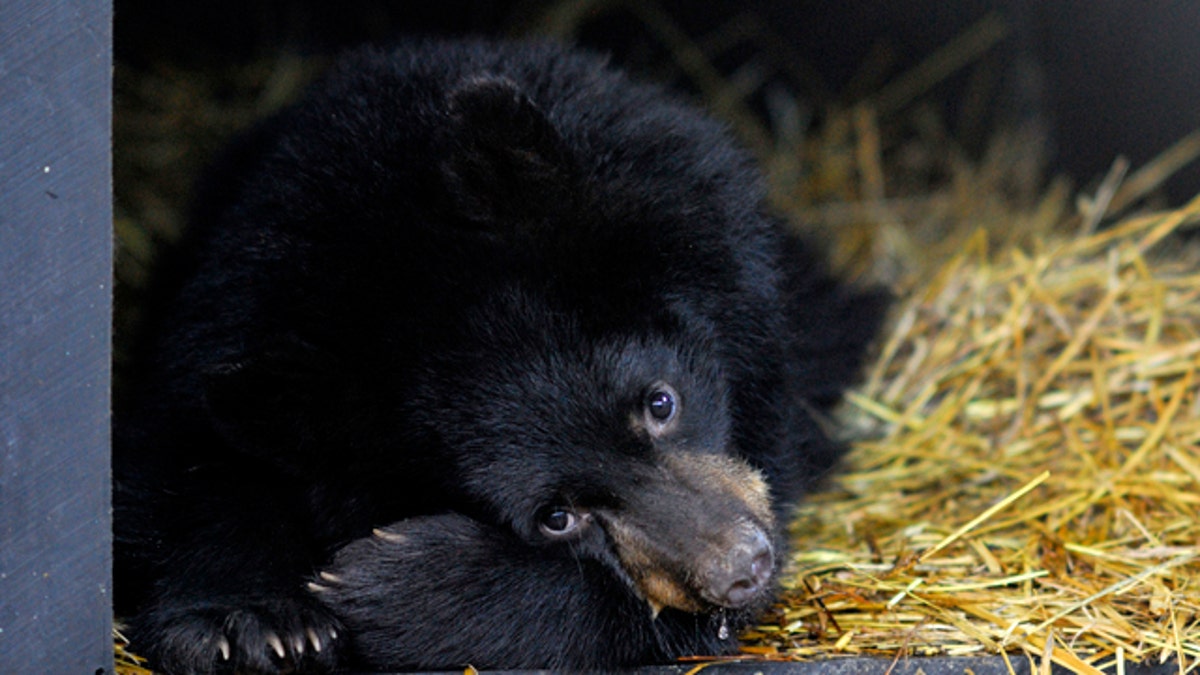Bears in Space? Hibernation May Hold Clue for Space Travel
{{#rendered}} {{/rendered}}
Hibernating bears -- like this American Black Bear -- set their energy demands to low, but they don't chill out very much, according to new research. (AP Photo/Institute of Arctic Biology, University of Alaska Fairbanks)
Unlike most animals that take long winter naps, bears don't chill out very much, a feat that has researchers speculating about better health care -- and even pioneering deep space travel.
The body temperature of small hibernating mammals can drop to near freezing. But that's not the case for the more human-sized black bears, according to the new research published in the journal Science.
The study's senior author, Brian M. Barnes of the Institute for Arctic Biology at the University of Alaska, noted that after hibernating, black bears don't suffer the loss of bone and muscle mass that occurs in humans after a long period of inactivity.
{{#rendered}} {{/rendered}}He said that if scientists could better understand the mechanisms behind the lower metabolic demand, it might be possible to develop new therapies and medicines for people. Science fiction has long concerned itself with the concept of "suspended animation," which would make deep space travel feasible. And if a similar ability to hibernate could lurk within humans, suspended animation could be more real than you might think.
According to the Telegraph, Stanford University's Craig Heller, who contributed to the study, made the link to space travel explicit: "There has always been a thought that, if there is ever long-distance space travel, it would be good to be able to put people into a state of lower metabolism or suspended animation. That's almost science fiction -- but you can see the rationale."
While it would require a lot more research, scientists say understanding how the process of hibernation works might also aid in preventing osteoporosis and muscle atrophy from disuse -- possibly allowing doctors one day to place injured, disabled people in a type of suspended or reduced animation until they are healed.
{{#rendered}} {{/rendered}}Barnes, Toien and colleagues studied five black bears -- three males and two females -- that Alaska wildlife officials had classified as nuisances and removed from areas around people.
The bears were provided with wooden nest boxes fitted with cameras and sound recorders as well as instruments to measure oxygen consumption. The bears each had implanted transmitters to measure their temperature, heart rate and muscle activity.
The scientists found that rather than having their temperature drop to near freezing, the bears went through cycles of several days when their temperature fell to 86 degrees. Then they began shivering and the readings climbed back to about 97 degrees, nearly normal.
{{#rendered}} {{/rendered}}However, even though they remained relatively warm, the bears' metabolism fell to very low levels. Their oxygen use was reduced by 75 percent from summer rates and their heart rate fell from 55 beats per minute to 14 beats per minute.
The research was supported by the U.S. Army Medical Research and Materiel Command, National Science Foundation, National Institutes of Health, Stanford University, American Heart Association and the Fulbright Program.
The Associated Press contributed to this report.
